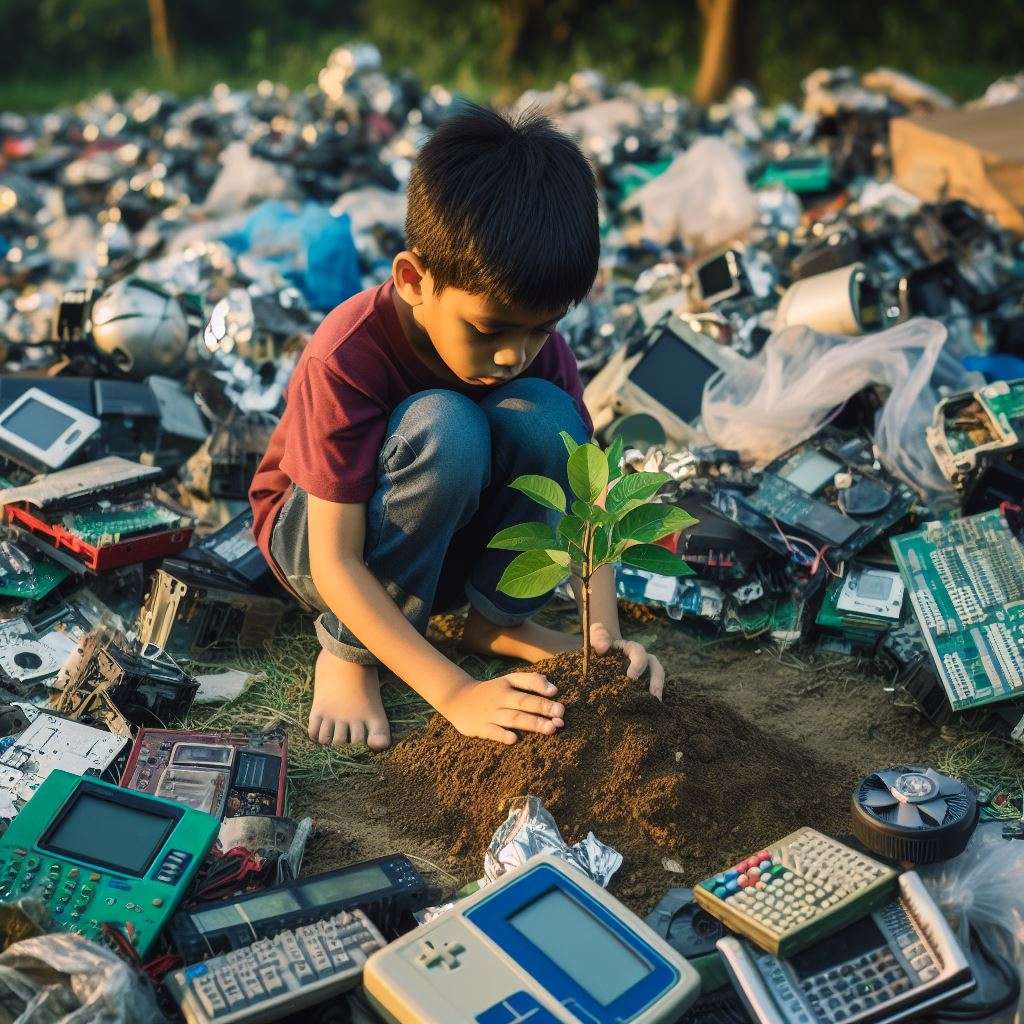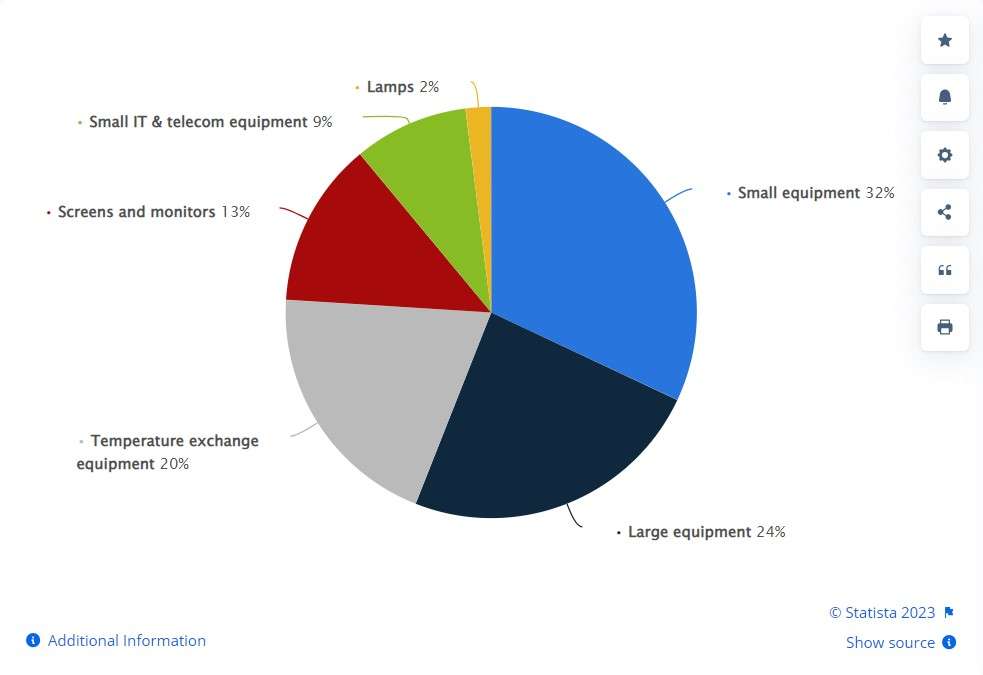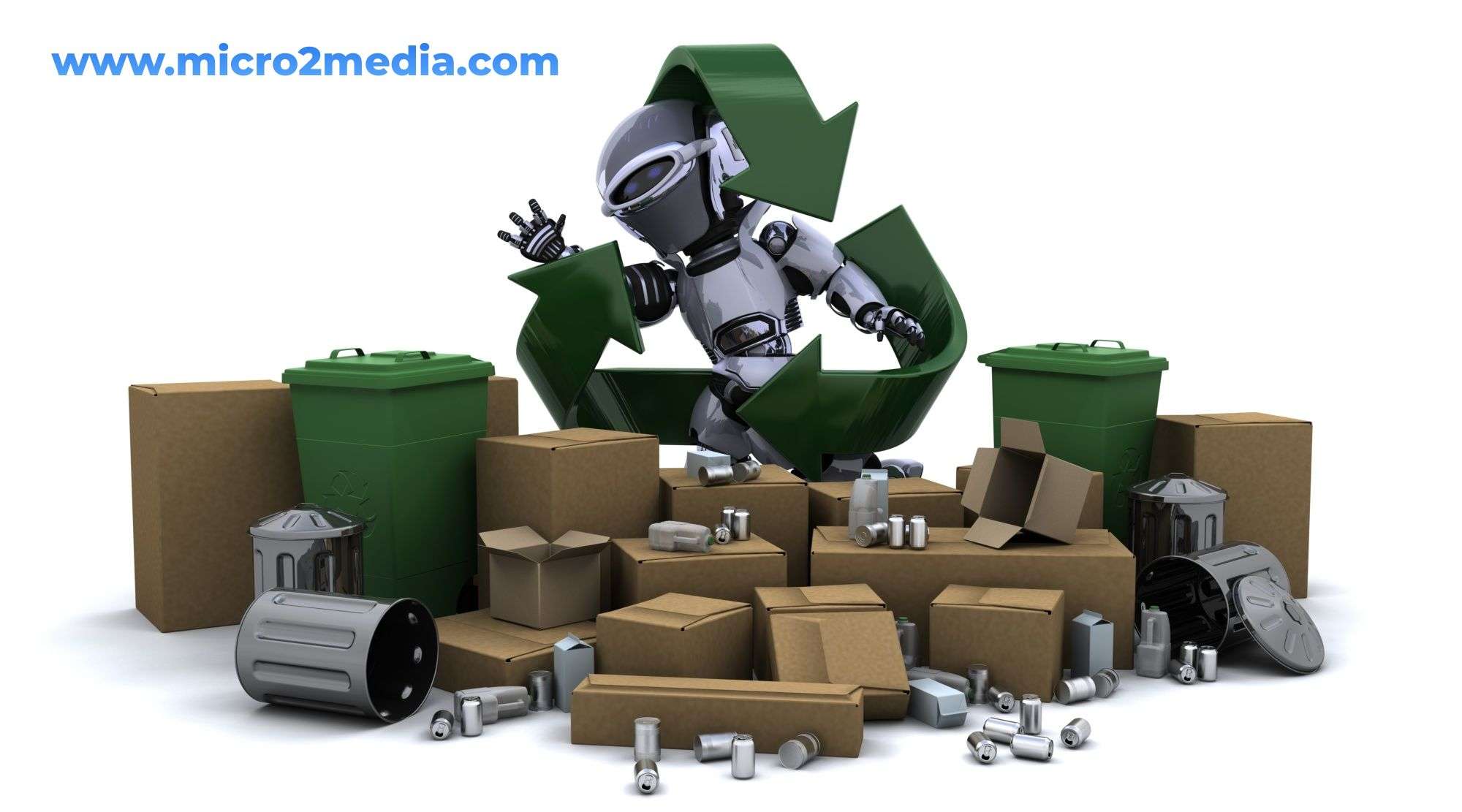Introduction
The rapid growth of electronic devices in our technologically advanced era has led to a critical global issue: electronic waste, or e-waste. Every year, millions of tons of discarded electronic devices, including computers, mobile phones, and household appliances, contribute to the e-waste stream. Mismanagement of this waste can pose severe threats to the environment and human health if not handled appropriately.

Alarming Statistics and Impacts
According to data reported on October 18, 2023, e-waste is the fastest-growing solid waste stream globally. Shockingly, a mere 17.4% of the estimated 53.6 million tons of e-waste produced in 2019 was formally collected and recycled. This highlights a significant gap in the proper management of e-waste, leading to harmful consequences for both the environment and human health.
The mishandling of e-waste, particularly through inferior recycling methods like open burning, poses dangers by releasing harmful substances such as lead into the environment. This presents a grave concern, especially for vulnerable demographics such as children and pregnant women. Sadly, millions of women and child laborers involved in informal e-waste recycling are at risk of exposure to hazardous materials.

Scope of the Problem
The escalating proliferation of e-waste, outpacing global population growth threefold, represents an impending crisis demanding urgent attention. These discarded electronic devices not only constitute a burgeoning waste stream but also house valuable and finite resources that, if efficiently managed, could alleviate resource scarcity and environmental strain. Regrettably, the improper disposal and inadequate recycling of e-waste predominantly affect marginalized communities in low- and middle-income countries (LMICs). Insufficient regulations, inadequate infrastructure, and a dearth of training exacerbate the vulnerabilities of these communities, amplifying health and environmental risks.
The clandestine transboundary movement of e-waste from developed to developing countries persisting in contravention of international regulations poses a severe threat. E-waste, deemed hazardous due to its toxic constituents such as dioxins, lead, and mercury, poses significant health and safety hazards. These substances, when released into the environment through improper handling, leaching, or burning, contaminate air, soil, water, and food sources, endangering human health and ecosystems alike.
The magnitude of this crisis necessitates a concerted global effort to establish robust regulatory frameworks, fortify recycling infrastructure, and implement sustainable practices. Collaboration between nations, reinforced by stringent enforcement mechanisms and heightened public awareness, is imperative to curb the hazardous impacts of e-waste and chart a path toward responsible and sustainable electronic waste management globally.
Exposure Hazards and Vulnerability of Children
E-waste handling practices, including scavenging, dumping, and burning, have dire consequences by releasing hazardous substances that contaminate the air, soil, water, and surrounding communities. Tragically, children, often involved in these perilous activities, bear the brunt of direct exposure to injuries and harmful chemicals. Shocking estimates indicate that millions of children globally engage in such labor, exacerbating their vulnerability to the detrimental effects of e-waste.
The health outcomes linked to e-waste exposure during pregnancy and childhood are deeply concerning. These include heightened risks of stillbirth, premature birth, neurodevelopmental complications due to lead exposure, respiratory issues, and increased asthma incidence. The unique vulnerabilities and developmental stages of children and pregnant women render them particularly susceptible to these health risks associated with e-waste exposure.
This situation calls for urgent action to protect these vulnerable populations from the dangers posed by e-waste. Implementing stringent regulations, promoting safer recycling methods, and educating communities about the perils of improper e-waste handling are critical steps toward mitigating these health hazards. Addressing this issue comprehensively is essential to ensure the well-being of present and future generations in the face of this escalating global crisis.
Prevention and Management
- Mitigating the risks linked to e-waste requires swift and decisive action, both on a national and international scale. To address this pressing issue effectively, several critical measures must be undertaken:
- Enforcement of International Agreements: Upholding and reinforcing high-level international agreements, such as the Basel Convention, is paramount in governing the movement and management of hazardous e-waste across borders.
- Implementation of National Legislation: Developing and implementing stringent national e-waste management legislation is vital to establish clear guidelines and regulations for proper handling and disposal practices.
- Incorporation of Health Protection Measures: Integrating comprehensive health protection measures within these legislations is crucial to safeguard communities from the health hazards posed by improper e-waste management.
- Monitoring and Intervention: Continuous monitoring of e-waste sites is necessary to oversee compliance and identify areas for improvement. Implementing targeted interventions to enhance recycling practices is pivotal for minimizing environmental and health risks.
- Education and Training: Educating and training healthcare workers about e-waste-related health issues is essential. This initiative ensures they are equipped to identify, address, and mitigate the health risks associated with e-waste exposure effectively.
These multifaceted strategies, encompassing legal, regulatory, monitoring, and educational aspects, form the cornerstone of efforts aimed at curbing the detrimental impacts of e-waste on both human health and the environment.
International Efforts and WHO Response
The Basel Convention, responsible for overseeing the international movement of hazardous waste, has taken significant strides in establishing inclusive environmental agreements that specifically focus on managing hazardous waste, including the realm of e-waste management. Concurrently, the World Health Organization’s (WHO) Initiative on E-Waste and Child Health is actively championing several international programs and pilot projects designed explicitly to shield children from the adverse effects of e-waste exposure.
WHO’s proactive efforts encompass amplifying public awareness, fortifying the capabilities of the healthcare sector, and streamlining exposure monitoring and protective interventions. Through their comprehensive array of training tools and insightful reports, WHO underscores the urgent necessity for concerted and effective actions to protect children from the escalating threat posed by the rampant mismanagement of e-waste. These endeavors represent crucial steps towards mitigating the grave health risks stemming from e-waste exposure, particularly for vulnerable demographics like children. Conclusion
The exponential surge in e-waste presents a daunting challenge that demands urgent attention and collective action. With its harmful impact on the environment, human health, and particularly the vulnerability of children and pregnant women, addressing e-waste mismanagement requires immediate and concerted efforts on a global scale.
The effective implementation of regulations, sustainable recycling practices, and heightened awareness are crucial steps towards mitigating the hazards posed by e-waste. Collaboration among nations, supported by organizations like WHO, is paramount in protecting communities and ensuring a sustainable future free from the looming dangers of electronic waste.
